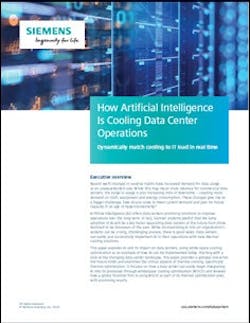How Artificial Intelligence Is Cooling Data Center Operations
Recent swift changes in societal habits have increased demand for data usage at an unprecedented rate. While this may mean more revenue for commercial data centers, the surge in usage is also increasing risks of downtime – creating more demand on staff, equipment and energy consumption. These changes give rise to a bigger challenge: how do you scale to meet current demand and plan for future capacity in an age of hyperconnectivity?
Artificial Intelligence (AI) offers data centers promising solutions to improve operations over the long term. In fact, Gartner analysts predict that the early adoption of AI will be a key factor separating data centers of the future from those destined to be dinosaurs of the past. While incorporating AI into an organization’s systems can be a long, challenging process, there is good news. Data centers can easily and successfully implement AI in their operations with new thermal cooling solutions.
This paper explores AI and its impact on data centers, using white space cooling optimization as an example of how AI can be implemented today. Starting with a look at the changing data center landscape, this paper provides a glimpse into what the future holds and examines the critical aspects of thermal cooling, specifically thermal optimization. It focuses on how a data center can easily begin integrating AI into its processes through whitespace cooling optimization (WSCO) and reviews how a global financial firm is using WSCO as part of its thermal optimization plan, with promising results.
